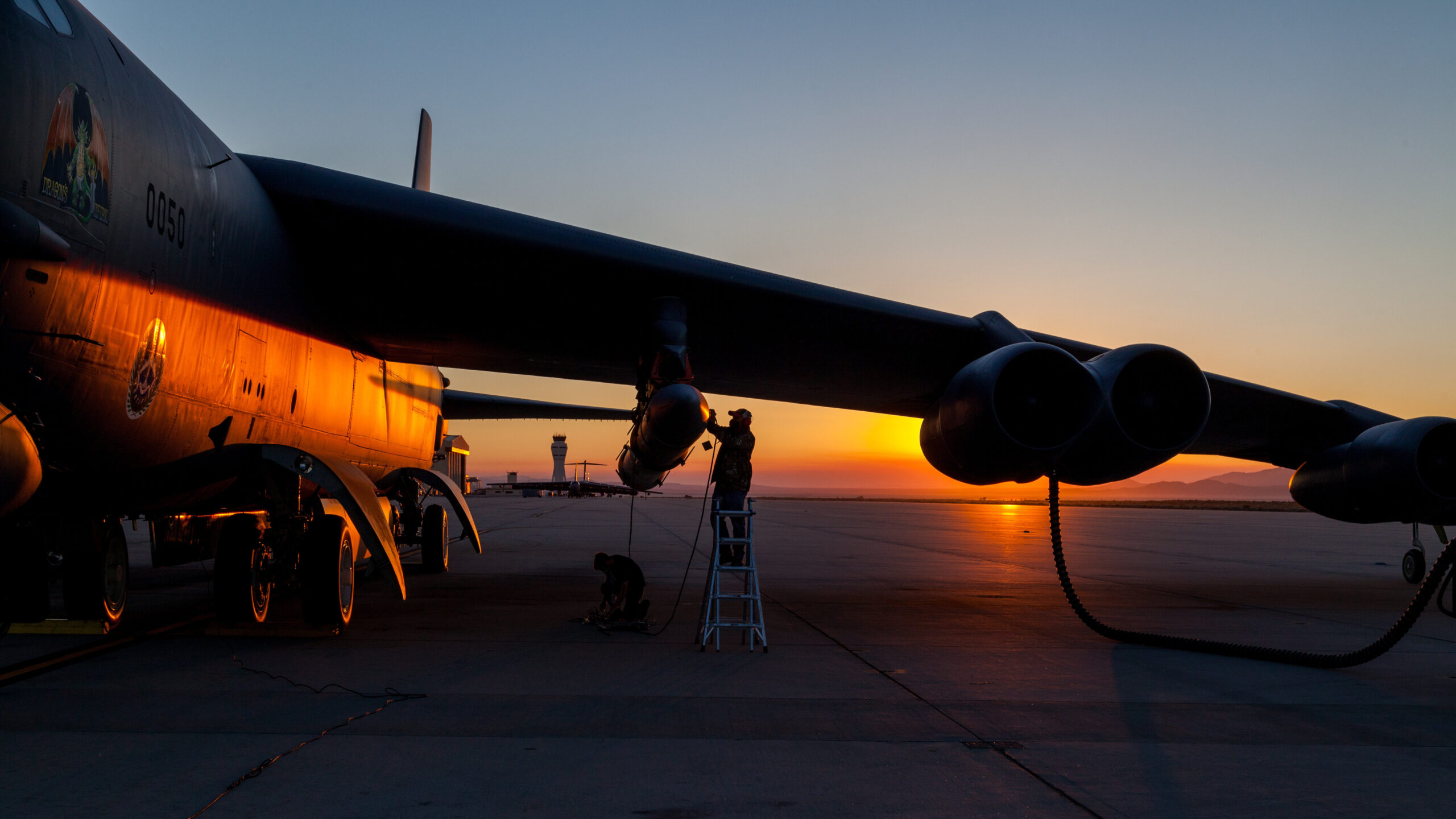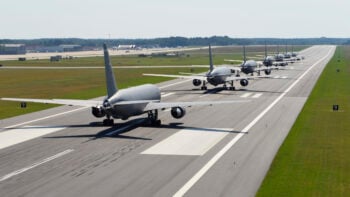
Air-launched Rapid Response Weapon (ARRW), 2020 captive carry test. (Air Force photo by Kyle Brasier)
WASHINGTON — The Air Force recently conducted a second all-up-round test for its new hypersonic Air-launched Rapid Response Weapon (ARRW), and though a service press release today said the prototype missile “met several of the objectives” of the test flight, it is unclear whether the test was fully successful.
“A B-52H Stratofortress released the second All-Up-Round AGM-183A Air-launched Rapid Response Weapon off the southern California coast on March 13, 2023. This test was the second launch of a full prototype operational hypersonic missile and focused on the ARRW’s end-to-end performance,” the release said.
“The test met several of the objectives and the ARRW team engineers and testers are collecting data for further analysis,” the release added.
The missile’s first all-up round — or fully assembled — test was conducted in December, an event where the Air Force said “all objectives were met” and said the missile release was “successfully” done. The service’s statement today did not say whether the most recent trial achieved all its stated objectives, raising questions about how ARRW performed in its second evaluation for the program’s capstone testing phase. An Air Force spokesperson declined to provide further details about the test’s results when asked by Breaking Defense.
RELATED: On heels of successful hypersonic test, Air Force acquisition exec still skeptical
Built by Lockheed Martin, the hypersonic air-to-ground weapon is planned to be launched by bombers to race toward targets at speeds greater than Mach 5. Its development has been bumpy: a string of three consecutive failed tests for the missile’s booster phase prompted lawmakers to cut funding for the program, preventing the Air Force from starting procurement in fiscal 2022.
The Air Force then planned to kick off procurement in FY23, but during the service’s budget unveiling last year officials said that they would seek to transfer those funds back into research and development. The program finally achieved a successful launch in May 2022, but after another successful flight test in July, Air Force acquisition chief Andrew Hunter said the service was still unsure about proceeding with procurement.
The Air Force’s hesitation to buy the missile extended to FY24, where officials recently revealed they would seek $150 million to continue development but would once again not put any funding toward procurement. Maj. Gen. Mike Greiner, the Air Force deputy assistant secretary for budget, said during a March 13 briefing — the same day as the latest ARRW launch — that the service planned a total of four all-up-round tests, which RDT&E funding would finish out in FY24. Following the most recent all-up-round exercise, two more critical tests now remain, which Greiner indicated would play a key role in an acquisition decision.
“I will tell you, I don’t think a final decision has been made. We’ll wait and see how those test results come out,” Greiner said at the time, referring also to development of the Hypersonic Attack Cruise Missile (HACM), the Air Force’s other leading hypersonic effort.
“It will also be a discussion on [the] mix of weapons, right, so both of those are really geared towards two different types of platforms,” he added. “And so I think we’ll continue to do that analysis, see how these test results [turn out] and then make a final decision on what mix of hypersonic weapons is right for the Air Force going forward.”






















